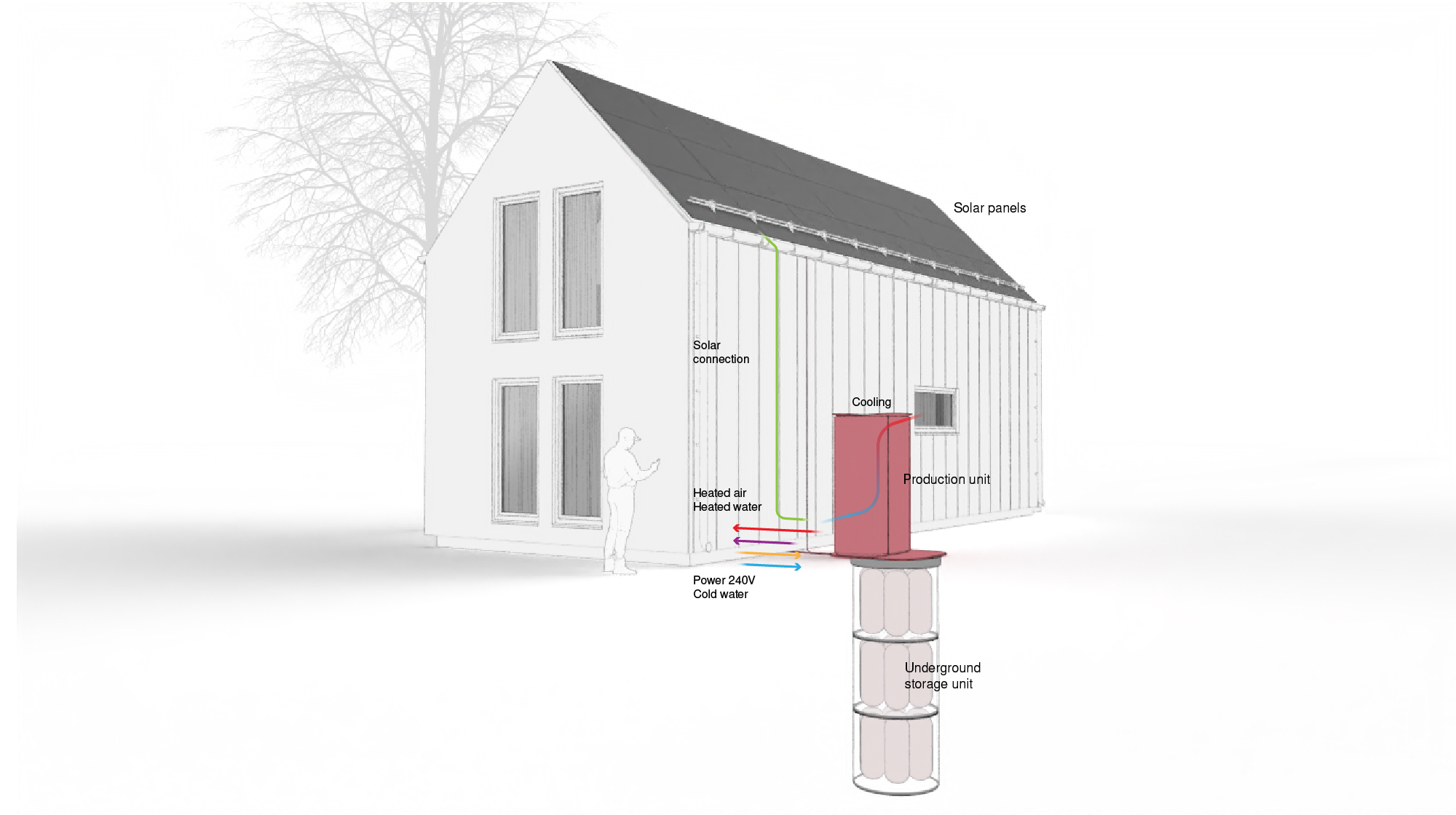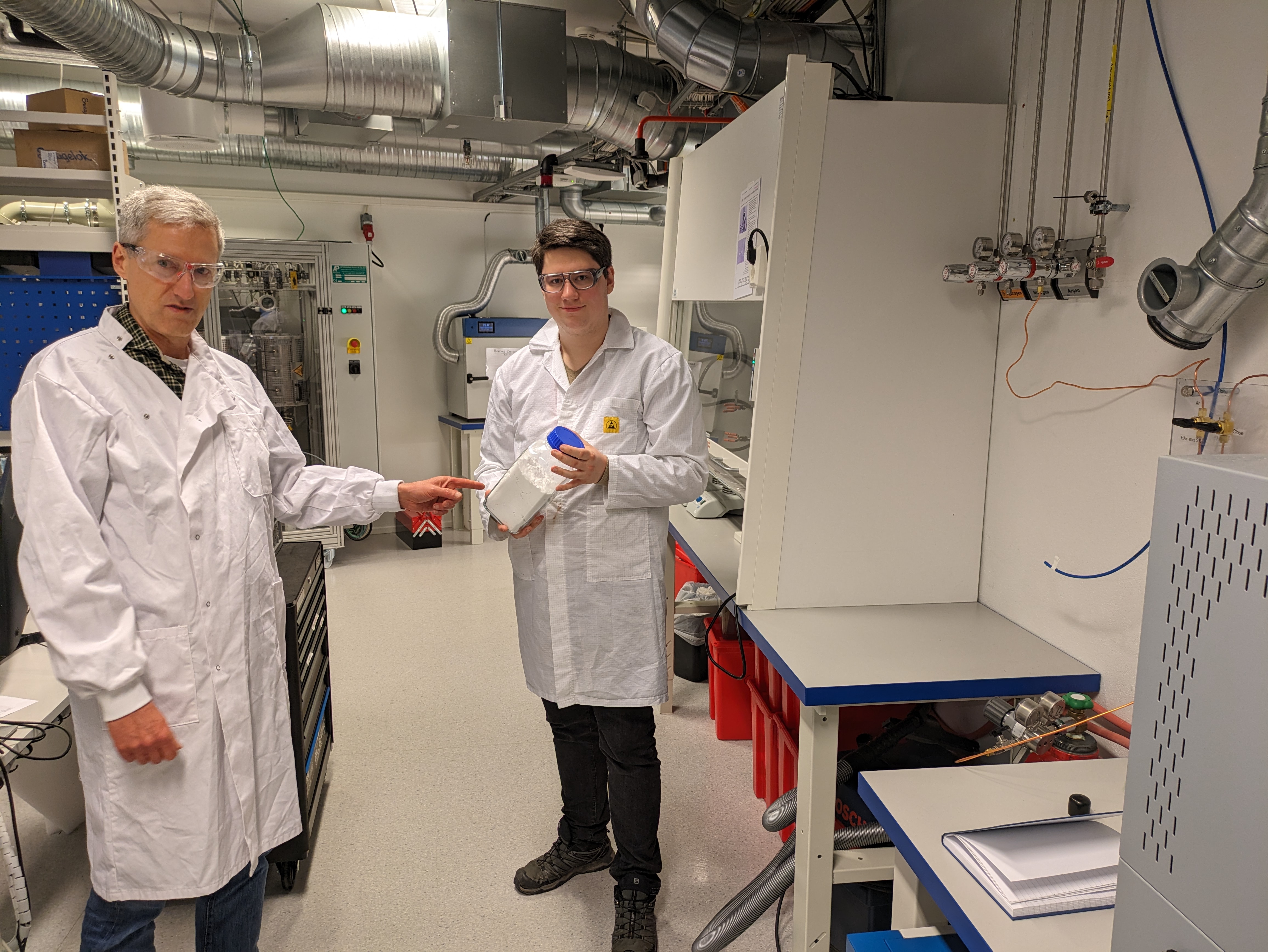Photoncycle targets low-cost energy storage with a clever hydrogen solution

For years, the solar energy sector has grappled with interseasonal energy storage. The ability to harness the surplus solar energy of summer months for use during the winter has remained an elusive goal, with existing solutions like batteries falling short due to prohibitive costs and limited lifespans. Hydrogen, meanwhile, despite its clean-burning properties, has been sidelined due to inefficiency and high costs.
Photoncycle — a startup emerging from the depths of an accelerator in Oslo Science Park in Oslo, Norway — has been working on a solution. With a vision as bright as the summer sun, the startup claims its solid hydrogen-based technology can store energy more efficiently in an ammonia synthesis reactor. The claim is this tech does the storage more cost-effectively than any battery or liquid hydrogen solution on the market.

“Lithium-ion batteries use costly metals. Our material is super cheap: To store 10,000 kilowatt-hours, it costs around $1,500, so it’s almost nothing. In addition, our storage solution is 20 times the density of a lithium-ion battery, and you don’t lose the current,” founder and CEO Bjørn Brandtzaeg explains in an interview with TechCrunch. “That means we have a system where you can contain energy over time, enabling seasonal storage. It’s a completely different thing than traditional batteries.”
Photoncycle employs water and electricity to produce hydrogen. That in itself isn’t uncommon if you’ve been following fuel cell vehicle technology. However, the company’s approach incorporates an innovative twist: a reversible high-temperature fuel cell. This advanced fuel cell can produce hydrogen and generate electricity within the same unit.
The core of Photoncycle’s innovation lies in its treatment of hydrogen. They process the hydrogen and then utilize its technology to convert and store it in a solid form. The company claims this storage method is not only safe, owing to the non-flammable and non-explosive nature of the solid state, but also highly efficient. It enables hydrogen storage at densities approximately 50% greater than liquid hydrogen, presenting a significant advancement in hydrogen storage solutions. These innovations form the cornerstone of Photoncycle’s system, facilitating safe and dense hydrogen storage, which the company says is a huge step forward in energy technology.
Current clean energy solutions such as rooftop solar power are limited by inconsistent supply due to the unpredictable nature of weather conditions. A robust, reusable energy storage solution could bridge these timings, ensuring a stable energy supply when these renewable sources encounter unavoidable intermittent periods.
Great in theory, but not without its own challenges.
“The Netherlands is the country in Europe with the highest density of rooftop solar. We are seeing a massive ramp now because of high energy prices; everyone wants solar on the roof,” Brandtzaeg says. He adds, however, that this method can backfire for homeowners: “In July last year, in the Netherlands, in the middle of the day, you had to pay €500 a megawatt hour to export your electricity.”
Putting the energy storage along with the house generating the power effectively lets houses go off-grid. Photoncycle says it has tested and worked the main components of its solution — the next step is to integrate it into a system. If successful, the company says it can seriously challenge Powerwall, Tesla’s lithium-ion battery solution.

“This is a relatively complex system — that’s why we have so many PhDs in different disciplines working on this. The reason why Elon Musk said that hydrogen is stupid, is that when you convert electricity to hydrogen and back, you are losing quite a bit of energy,” Brandtzaeg says. He believes his company can turn this bug into a feature. “In a residential setting where 70% of energy needs are heating, there is an opportunity to use that excess heat to provide hot water. We will target markets where people are using natural gas for heating at the moment and then replace the gas boiler in the house using the existing water-based infrastructure.”
Brandtzaeg’s confidence regarding the concept’s operational framework is compelling. He gestured toward a small mock-up of their operations plant within their labs, scaled down to the size of a car battery. Brandtzaeg believes this scaling should be problem-free, citing it as the primary reason they felt confident moving forward with the project.
When it comes to power delivery, it takes a little while for the hydrogen to generate electricity, so while it is spooling up, the company relies on an intermediary, more conventional, battery for load balancing. The firm certainly has investors’ attention: Photoncycle just raised $5.3 million (€5 million) to build its first few power storage devices in Denmark, which Photoncycle has chosen as its test market.
“We could have raised 10 times as much as we did, given the interest. But after this raise, I’m still a majority owner,” Brandtzaeg says. “I wanted to keep control over the business as long as possible and not raise more capital than we need to bring this service to market.”